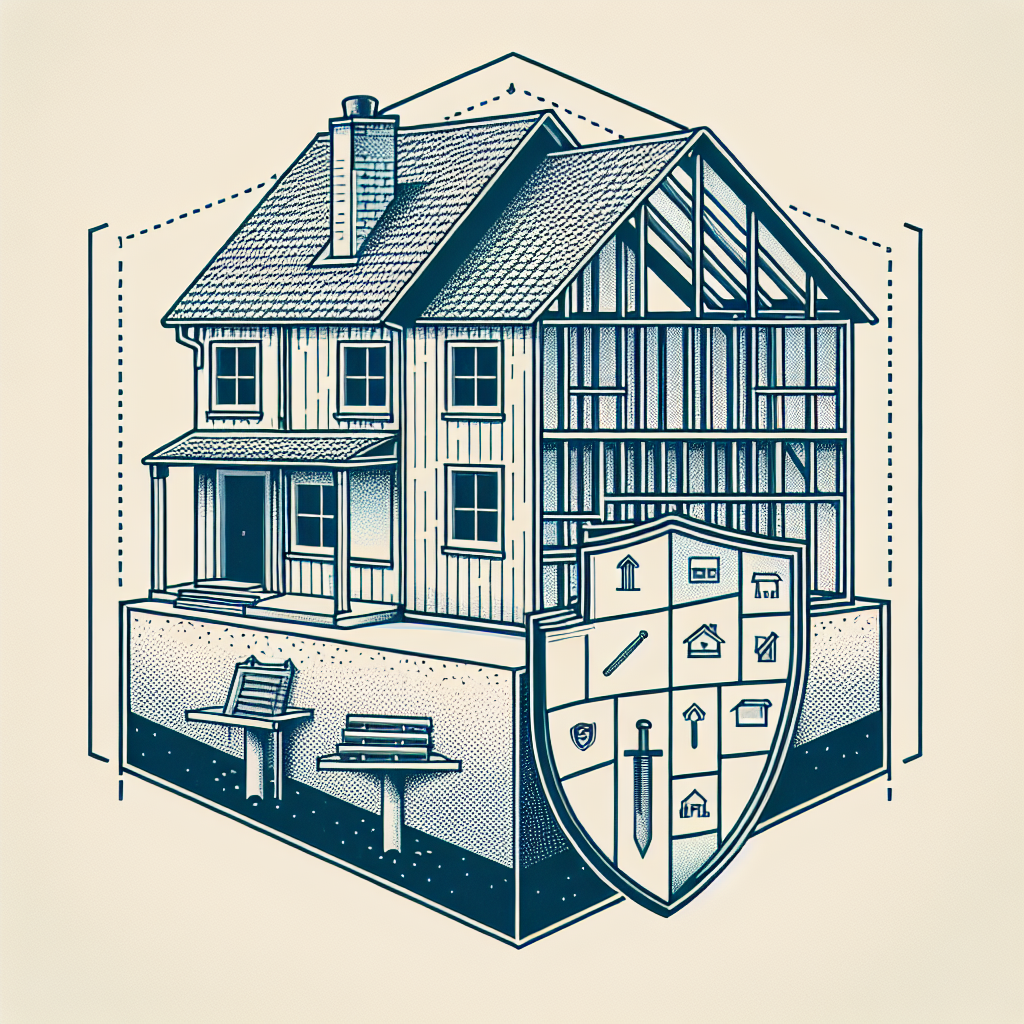Filed under Home Insurance on
Understanding Key Home Insurance Coverages Explained

When it comes to safeguarding your residence, having a comprehensive understanding of home insurance coverages is crucial. Home insurance can be complex, with various components that cater to different kinds of risks. Whether you're a first-time homeowner or renewing your policy, knowing the critical elements of home insurance coverage will empower you to make informed decisions, enhancing the protection of your most valuable asset.
Overview of Home Insurance Coverages
Home insurance is a policy package designed to cover unexpected damage or loss to your property and possessions. It typically combines multiple types of coverages, each serving a distinct purpose. Understanding these key home insurance coverages is paramount for ensuring you have the right policy for your needs. Here, we delve into the essential elements of home insurance coverage.
1. Dwelling Coverage
Dwelling coverage is the cornerstone of your home insurance policy. It helps pay for the repair or rebuilding of your home if it’s damaged by a covered peril. Common causes of damage include fire, windstorms, hail, or vandalism. Adequate dwelling coverage is vital, ensuring you can restore your home to its original condition without financial strain.
2. Other Structures Coverage
Besides your primary residence, you may have other structures on your property such as a detached garage, gazebo, or fence. Separate from dwelling coverage, other structures coverage protects these additional buildings and structures. This coverage is generally set as a percentage of your dwelling coverage, usually around 10%.
3. Personal Property Coverage
Personal property coverage applies to your personal belongings, safeguarding items like furniture, electronics, clothing, and more. In case of theft or damage due to covered risks, this insurance helps reimburse you for the loss. Since this coverage can be subject to limits and exclusions, conducting a home inventory to assess the value of your possessions is advisable to ensure sufficient protection.
4. Liability Protection
An often underappreciated aspect of home insurance is liability coverage. It protects you from legal responsibility if someone is injured on your property or if you cause damage to someone else's property. This might include medical bills, legal fees, and settlements. In today's litigious society, having liability protection offers substantial peace of mind.
5. Additional Living Expenses (ALE)
If your home becomes uninhabitable due to a covered peril, where will you stay? Additional Living Expenses (ALE) coverage steps in to cover costs incurred from living elsewhere temporarily, such as hotel bills or rental properties. Knowing you have this financial safety net allows you to maintain stability during unexpected displacement.
Enhancing Your Home Insurance Policy
While key home insurance coverages provide a foundation, you can often enhance your policy with additional options according to your specific needs and risk tolerance. Let’s explore some popular endorsements that can further secure your home.
1. Flood Insurance
Standard home insurance policies typically exclude flood damage, yet flooding remains one of the most common and costly natural disasters. With flood insurance, you can specifically cover damages resulting from flooding, ensuring a comprehensive protective strategy for your home, especially if you live in a flood-prone area.
2. Earthquake Insurance
Much like flood insurance, standard policies usually do not cover earthquake damage. If you're located in an earthquake-prone region, obtaining earthquake coverage is a smart move to protect your home against potentially catastrophic damage.
3. Personal Property Floater
For high-value possessions, standard personal property coverage may not be sufficient. A personal property floater allows you to insure specific high-value items separately. This could include jewelry, art, collectibles, or expensive electronics, offering protection beyond the general coverage limits.
4. Replacement Cost vs. Actual Cash Value
Understanding how your personal property will be reimbursed is crucial. Replacement cost coverage reimburses you for the cost of replacing an item, without factoring in depreciation. Conversely, actual cash value accounts for depreciation, potentially resulting in lower reimbursement. Opting for replacement cost can be more beneficial, ensuring you receive adequate funds to replace your lost or damaged possessions.
Navigating Home Insurance Quotes and Premiums
Your insurance premium is significantly influenced by various factors, including location, home characteristics, and selected coverages. By thoroughly understanding home insurance coverages, you can tailor your policy while managing costs effectively. Consider the following ways to influence your insurance premium:
Evaluating Risk Factors
- Location: Homes in areas prone to natural disasters or with high crime rates may lead to higher premiums.
- Home Features: Older homes, those with outdated electrical systems, or homes with luxury features may affect your policy cost.
Optimizing Your Deductible
Choosing a higher deductible can lower your premium. However, ensure that you select a deductible that you can afford to pay out-of-pocket in the event of a claim. Balancing between a manageable deductible and a cost-effective premium is key.
Bundling Insurance Policies
Many insurance providers offer discounts for bundling multiple policies, such as home and auto insurance. This option not only offers savings but also simplifies your insurance management, consolidating your coverage under a single provider.
The Importance of Regular Policy Reviews
Securing a home insurance policy isn't a "set it and forget it" task. Conducting regular reviews ensures that your coverage aligns with your current needs and circumstances. Changes such as home renovations, acquiring new valuables, or even market shifts can necessitate adjustments in your policy. Comprehending key home insurance coverages can significantly impact your ability to adapt to these changes efficiently.
Industry Trends and Expert Insights
Understanding key home insurance coverages isn't just about present needs, but also about preparing for future trends. Industry analytics indicate a growing emphasis on personalized coverage options and the adoption of technology in risk assessment processes. Experts predict that insurance solutions tailored to specific homeowner needs will continue to evolve, offering more flexible and comprehensive protection.
Additionally, as climate change awareness rises, more homeowners are considering supplementary coverages like flood and earthquake insurance. Staying informed about such trends enhances your capability to secure your property against emerging risks.
Reaching out to insurance agents or brokers experienced in the field can provide valuable insights and ensure optimal policy selection aligned with your lifestyle and future needs. Trusted experts recommend reviewing policy options at least annually or after significant life changes to keep coverage up-to-date.
Conclusion
In conclusion, understanding key home insurance coverages enables you to protect what’s most important effectively. By evaluating dwelling coverage, personal property protection, liability insurance, and other essential components, you can tailor a plan that meets your unique needs. Enhance your policy by considering additional insurance options such as flood and earthquake coverage, and adjust your premiums through strategic decision-making. A well-crafted insurance plan offers peace of mind, ensuring you’re prepared for the unexpected challenges life might present.
Equipped with this knowledge, you’re ready to explore the insurance landscape with confidence, ensuring your home and belongings remain protected through life’s many journeys.





